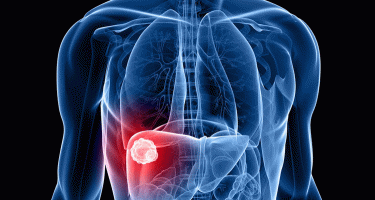
Drug-loaded 3D printed films could change cancer treatments forever as world first research from the University of South Australia shows that new films not only kill more than 80% of liver cancer cells but could also significantly reduce recurrence rates while minimising systematic toxicities of traditional chemotherapy.
Found in the International Journal of Pharmaceutics journal.
Created from gels are loaded with tailored doses anti-cancer drugs 5-fluorouracil (5FU) and cisplatin (Cis), the 3D printed films are placed at the exact surgical site where a cancer has been removed, localising drugs to the affected area to treat possible residual cancer cells, and limit undesirable side effects of traditional chemotherapy.
Initially designed as an adjuvant treatment for liver cancer, the precision-cut films also have the potential to treat ovarian cancer, head and neck cancer and many other cancers, where 5FU and Cis have already proven successful.
Every year, more than 800,000 people are diagnosed with this cancer throughout the world.
Globally, liver cancer is the third cause of cancer death with a 75% mortality rate.
UniSA researcher Dr Souha Youssef says the novel films have the potential to revolutionise liver cancer treatments.
“Despite medical strides, liver cancer remains a highly aggressive and deadly form of cancer with recurrence rates of up to 70%,” Dr Youssef says.
“The main treatment protocol requires the surgical removal of the tumour followed by chemotherapy, which while crucial to prevent relapse, is very challenging due to its debilitating side effects.
“There are striking statistics that show how many patients choose to discontinue treatment due to its aggressiveness and how it is affecting their quality of life.
“To bridge this gap, we developed a post-surgery chemotherapy-loaded film, that releases 5-fluorouracil and cisplatin directly into the surgical cavity. This targeted approach releases the drugs into the exact cavity and lower amounts into the bloodstream which otherwise cause serious side effect at high doses.”
Using state-of-the-art 3D printers, researchers have been able to tailor treatment protocols for each patient, with in-lab tests exerting a superior response rate in the treatment of liver cancer.
Senior researcher and co-director of UniSA’s Centre for Pharmaceutical Innovation, Professor Sanjay Garg, says a tailored approach to cancer treatment is essential for improving patient outcomes.
“Due to the heterogeneous nature of cancer, a one-size-fits-all approach is no longer suitable,” Prof Garg says.
“With a simple touch of a button, 3D printers enable endless opportunities to modulate drug release profiles, customise film geometry, and add or remove active ingredients based on individual needs.
“Our films also demonstrate controlled drug release lasting up to 23 days, ensuring sustained treatment benefits.
“Importantly, the biodegradable nature of the films adds a significant advantage of eliminating the need for surgical removal post-treatment, making it a more convenient and patient-friendly option for liver cancer therapy.”
The research team will soon move into preclinical trials to establish a crucial correlation between tumour size and the optimal dosing and release profile, setting the stage for potential clinical trials in the future.
Source: University of South Australia
The World Cancer Declaration recognises that to make major reductions in premature deaths, innovative education and training opportunities for healthcare workers in all disciplines of cancer control need to improve significantly.
ecancer plays a critical part in improving access to education for medical professionals.
Every day we help doctors, nurses, patients and their advocates to further their knowledge and improve the quality of care. Please make a donation to support our ongoing work.
Thank you for your support.